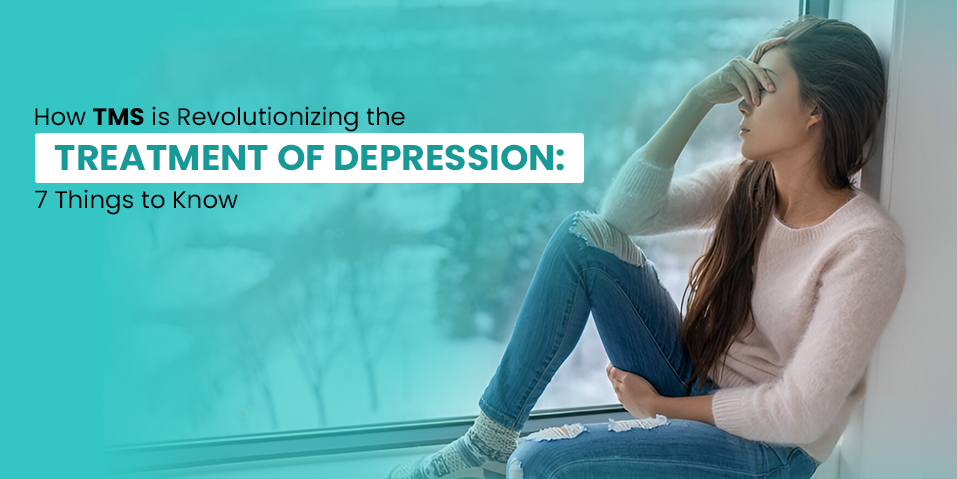Transcranial Magnetic Stimulation (TMS) has emerged as a groundbreaking treatment for depression, offering hope to individuals who have not responded well to traditional therapies. This non-invasive procedure, championed by leading clinics such as Neuralia TMS Melbourne, has garnered attention for its effectiveness in alleviating symptoms of depression. In this article, we explore seven key aspects of how TMS is revolutionizing the treatment of depression.
Non-Invasive Approaches in the Treatment of Depression
One of the most notable features of TMS is its non-invasive nature. Unlike traditional treatments for depression, such as medications or electroconvulsive therapy (ECT), TMS does not involve sedation or surgery. Instead, it utilises magnetic fields to stimulate specific areas of the brain associated with mood regulation.
This non-invasiveness translates into a more patient-friendly experience, as individuals undergoing TMS treatment typically do not require anaesthesia or experience the potential side effects associated with invasive procedures. The absence of surgical intervention contributes to a reduced risk of complications and a quicker recovery period, making TMS an appealing option for those seeking effective depression management without the drawbacks often associated with more invasive treatment modalities.
Precise Targeting of Brain Regions
TMS allows for precise targeting of specific brain regions implicated in depression. By focusing on the prefrontal cortex, which plays a crucial role in mood regulation, TMS can modulate neural activity and rebalance the brain’s functioning. This targeted approach minimises side effects and enhances the overall safety profile of the treatment.
Efficacy in Treatment-Resistant Cases
TMS has shown remarkable efficacy, particularly in cases where individuals have not responded well to conventional antidepressant medications. For those experiencing treatment-resistant depression, TMS offers a ray of hope by providing an alternative that can lead to significant symptom improvement.
Minimal Side Effects
Compared to traditional treatments, TMS is associated with minimal side effects. Most patients tolerate the procedure well, experiencing only mild discomfort or a tingling sensation during the sessions. The absence of systemic side effects commonly seen with medications makes TMS an attractive option for many individuals seeking relief from depression.
Outpatient Procedure:
TMS is typically administered on an outpatient basis, allowing individuals to maintain their daily routines without the need for hospitalisation. This convenience factor enhances accessibility to treatment, making it a viable option for those with busy schedules or commitments.
Gradual and Cumulative Improvement
TMS treatment is often characterised by gradual and cumulative improvement in depressive symptoms. While individual responses may vary, many patients report a steady reduction in the severity of their depression over several weeks. This progressive approach aligns with the idea of creating lasting changes in neural activity.
Approved by Regulatory Authorities
TMS has gained approval from regulatory authorities, including the National Institute for Health and Care Excellence (NICE). This recognition underscores the safety and efficacy of TMS as a legitimate and evidence-based treatment of depression.
Transcranial Magnetic Stimulation is ushering in a new era in the treatment of depression, offering a non-invasive and effective alternative for those who have not found relief through conventional methods. As research continues to unfold, TMS stands as a beacon of hope for individuals seeking a path towards improved mental health and well-being. Understanding these seven key aspects of TMS sheds light on its revolutionary impact on depression treatment and underscores its potential as a transformative intervention in the field of mental health.
Can TMS Be Integrated with Other Treatment of Depression?
Yes, TMS can be combined with other depression treatments. It is often used in conjunction with medications or psychotherapy to enhance overall therapeutic outcomes. Many clinicians also recommend tools like therapy worksheets to reinforce coping strategies and support behavioural change between sessions. However, the specific treatment plan depends on individual needs and should be discussed with a healthcare professional.
Are There Any Long-Term Side Effects of TMS?
As of current knowledge, there are no known long-term side effects associated with TMS. The procedure is considered safe, and any potential side effects are generally mild and temporary. However, individual responses may vary, and it’s essential to discuss any concerns with your healthcare provider.
Is TMS Suitable for Children or Adolescents with Depression?
While TMS has shown efficacy in adults, its safety and effectiveness in children and adolescents are still being studied. The use of TMS in this population may be considered on a case-by-case basis, and consultation with a qualified healthcare professional is crucial.
How Quickly Can One Expect to See Results with TMS?
The timeline for seeing results with TMS can vary among individuals. Some people may experience improvement after a few sessions, while others may take several weeks. Patience is key, and consistent communication with the healthcare team can help manage expectations.
Is TMS Painful?
TMS is typically well-tolerated, and most individuals experience only mild discomfort or a tingling sensation during the procedure. The discomfort is usually short-lived, and steps can be taken to adjust the intensity if necessary. Patients are encouraged to communicate any discomfort with the treatment team.

Leave a Reply
You must be logged in to post a comment.